List of Organs in the Human BodyFive important organs in the human body are required for survival, they are called vital organs. Several other organs work in tandem with these vital organs to keep the body running smoothly. A person's critical organs are those that are required for survival. Any of these organ problems can suddenly become life-threatening. Without these organs, life would be impossible. 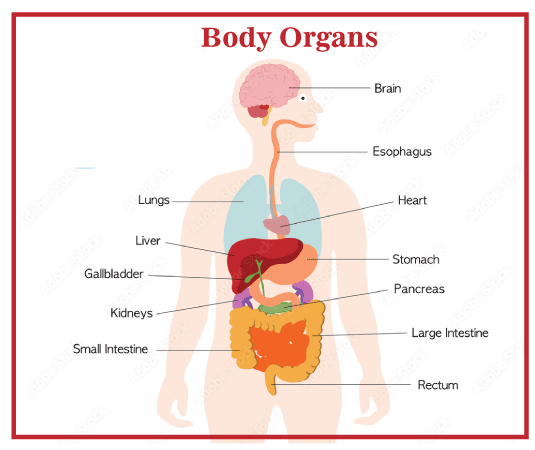
1. Brain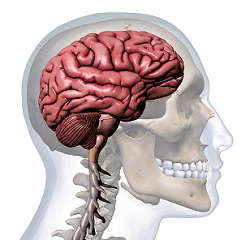
The brain is considered as the body's central processing unit (CPU) that controls our body's system and functions. The main function of the brain is to receive stimulus from the environment and processes them with the help of its nervous system. All the thoughts, emotions, physical sensations, etc. are processed by the nervous system with the help of neurons which in turn are under the control of the brain. All three work together and form the body's central nervous system's core. The brain is protected by the skull, which surrounds it. Neurologists are physicians who specialize in the study of the neurological system. They've identified a variety of brain regions over time, including systems within the brain that act similarly to autonomous organs. The cerebellum, cerebrum, and brainstem are the three main parts of the brain. There are other major components of the brain that work under these main parts along with the spinal cord thus making up the central nervous system. The major subparts of the central nervous system are as follows; the following are the key areas of the central nervous system: Medulla: It is located at the bottom of the brain. It helps in the proper regulation of heart and lung function. Pons: The part of the brain controlling eye and all the facial movements is pons and it is located just above the medulla Spinal cord: It is the most important part of the CNS, running from the base of the brain it goes through the middle of our back working as a transport system for the impulses. It aids in performing all the automatic functions of the body. These include transferring nerve impulses from the receiver point to the brain and again sending the response from the brain to the particular organ to perform reflex action. Therefore, helps in sending and receiving messages throughout the body. Parietal lobe: It is located in the middle of the brain and involved in the processing and interpretation of various signals like touch and pain. It also aids in object recognition. Frontal lobe: The frontal lobe is the largest region of the brain, positioned in the front of the head. It affects a variety of conscious functions, such as personality and movement. It also aids in the interpretation of scents by the brain. The occipital lobes are made up of three parts: The occipital lobe, located near the rear of the brain, is responsible for interpreting vision impulses. 2. Heart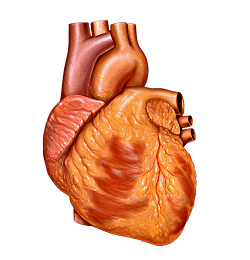
One of the most important organs of the body which helps in delivering the blood throughout the body to different organs is a vital part of the body's circulatory system. It works in tandem with the lungs to oxygenate blood and pump it through the blood arteries and throughout the body. Within the heart is an electrical system. Electrical impulses within the heart guarantee that it beats at a regular and consistent rate. When the body requires more blood, such as during strenuous activity, the heart rate rises. The deoxygenated blood is received by the right atrium from different organs through veins and goes directly to the right ventricle. This blood then enters the pulmonary artery. From there the blood is divided into different branches and reaches the lungs. This blood is oxygenated in the lungs. Now the oxygenated blood from the lungs goes to the left atrium and then travels through the left ventricle to pulmonary veins. Here comes the function of the heart, which helps in pumping this oxygenated blood to distribute it to other organs of the body except for the lungs. This function of oxygenated blood from the heart to different organs is performed by an artery that is divided into various branches. Valves play a vital role in the directionality of the blood; the blood flows in the proper direction and does not backflow to the previous chamber, there are four valves in the heart to ensure the same. They are:
3. Lungs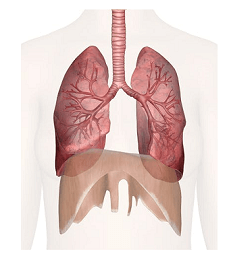
Oxygenation of blood is done by two organs of the body that is lungs and the heart. They do so by filtering all the air we breathe and then exchanging it for oxygen. This process of oxygenation is a vital process that includes many subparts of the lungs in various steps. All the steps included in the process performed by the lungs is as follows:
Lungs are very important for the survival of any human being without lungs a person cannot breathe and will die. When a person breathes in and breathes out the lungs expand and contract they do so with the help of another organ called a diaphragm which is present at the bottom of the lungs. It is made up of thick muscles. 4. Liver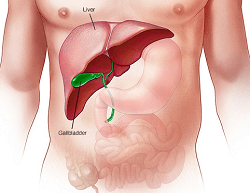
An important organ that helps in the metabolism of a person is the liver. It is situated at the upper right side of the abdomen and just below the rib cage. The two major roles played by the liver are filtering of blood and digestion. But there are also numerous other functions performed by the liver:
The liver along with the gallbladder helps in delivering all the bile from the liver to the small intestines. Gall bladder in turn stores this bile for later usage. 5. Kidneys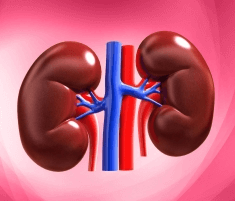
Small fist-sized organs which look just like a pair of beans are kidneys. Located on either side of the back, they are protected by the lower side of the rib cage. Kidneys perform a very vital function of removing all the waste our body has by filtering and removing it from the body. Nephrons are tiny small units that perform the task of filtration. Each kidney contains millions of such tiny units to perform the task without fail. All the waste of the body is converted into urine which is excreted out of the body by another organ called the ureters and urinary bladder. All the filtered blood is distributed throughout the body with the help of the renal vein. Like other vital organs which cannot be replaced with anything else, a person can survive with one kidney all his life, although it will make his life short. There are artificial procedures to filter the blood of the body when kidneys face serious failures like dialysis until they get a suitable donor for a kidney transplant. Nonvital organsOrgans that are not crucial to a person's survival are known as non-vital organs. However, this does not rule out the possibility of life-threatening or serious disorders affecting these organs. Many infections and malignancies of non-vital organs can be fatal if they are not treated quickly. Non-vital organ injuries can have an impact on vital organs, such as when a gallstone impairs liver function. There are many non-vital organs in our bodies. Calling them non-vital in no way means they are not very essential functioning. Every organ whether it comes under a vital category or nonvital is very important for proper functioning. Some of the nonvital organs are as follows:
Next TopicList of Prepositions in English
|
 For Videos Join Our Youtube Channel: Join Now
For Videos Join Our Youtube Channel: Join Now
Feedback
- Send your Feedback to [email protected]
Help Others, Please Share









